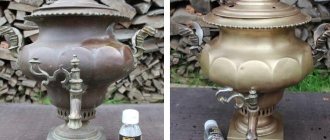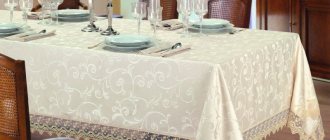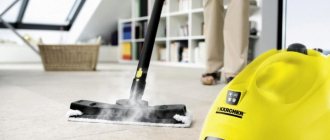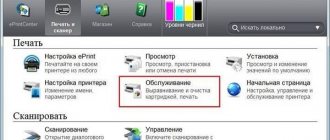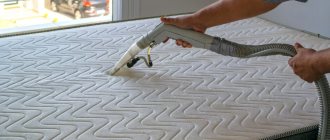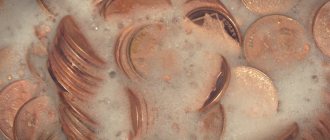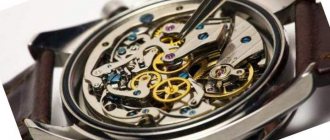Old icons are passed down from generation to generation as family heirlooms. Indeed, these religious attributes are endowed with incredible miraculous powers, which is where their high value lies. But unfortunately, the power of the icon does not protect it from aging - fading of colors, deformation and other defects. Therefore, every person who has received such a valuable thing as an icon should know how to restore an icon at home, as well as clean it.
Ancient icon
Restoration methods
Cleaning icons is done in different ways, the choice depends on what material the image is made of.
Before and after restoration of the house icon
Scenic icons
In order not to damage the color scheme chosen by the artist, you should not coat the surface with mineral or vegetable oils. Such substances change the shades of paints over time.
Cleaning
With a soft cloth they begin to wipe from the corners and edges, checking the reaction of the protective layer to the action of the cleaning composition. Moving towards the center, the dirt is gradually removed if the layer protecting the painting is not damaged. The following cleaning compositions are made:
- Soap solution. Removes traces of soot, use a 5% solution of baby soap, but only occasionally.
- Turpentine-alcohol composition. Mix the egg yolk, turpentine and alcohol in two parts, cold boiled water - five parts. Apply to the paint layer with a brush and remove it with a cotton swab after a few minutes.
- Alcohol solution. Vodka or alcohol is mixed with water in equal parts. A cotton swab is soaked in the liquid and gently wiped over the surface.
Disinfection
It is not recommended to wash the wooden base with copious amounts of water. Mold that has settled on the inside is removed using a soft brush or cotton swab or sponge. To do this, dilute baking soda with table vinegar and gently wipe the affected area with the mixture. The fungus can also be destroyed using hydrogen peroxide.
Strengthening
The image is saved from further destruction by applying an emulsion of egg yolk, three parts water and two parts vodka. The liquid is thoroughly mixed. The icon is impregnated with the composition in places where swelling, cracks, peeling and peeling of paint have appeared. Dry in a horizontal position and repeat the procedure several times, pressing the lagging scales to the base.
The paint layer that falls behind along with the primer is strengthened only with natural means. They use fish or flesh glue, and soak the damaged areas with a weak 3–5 percent solution.
Protection
Restore the protective layer by coating with linseed oil. The side surfaces and back side are treated with a mixture of turpentine and wax (3:2), this will protect the tree from bark beetles.
If the wooden base is warped or bent, you cannot straighten it under pressure. Cracks and chips are leveled with a mixture of glue and chalk or sawdust. From the back, pour hot wax over the broken areas.
Metal icons
It is not easy to clean an icon made of bronze, gold or silver from plaque and darkening if the surface has a carved texture. It is even more difficult to maintain the integrity of the icon when it is combined; it is important not to damage the pictorial design. Do not use abrasive pastes: solid particles will scratch the surface.
Copper
Images based on embossed copper can be cleaned using tooth powder and GOI paste. In the old days, icon frames were cleaned with cranberries and barrel tomatoes. The metal parts were rubbed with the products, left in this form for a short time, then wiped dry with a napkin.
Gold Silver
Valuable metals are cleaned using vodka, in which a swab or cotton swab is moistened if you need to clean a raised surface. Wipe gold and silver icons with a weak solution of acetic or citric acid or ammonia. After cleaning, the products must be washed with clean boiled water.
Mold and mildew removal
The sacred image on the tree can be destroyed due to mold, which spreads very quickly. If mold has formed on the front of the icon, in order to avoid damage to the face, you should take the icon to a restorer. Removing mold in a visible place yourself is very difficult and can do more harm than good.
If the fungus has spread to the back of the heirloom, you can remove it yourself. You will need a brush whose bristles are made of nylon.
How to remove mold from wooden surfaces of icons:
- You need a piece of cotton wool and hydrogen peroxide. The material is dipped into the solution and applied to the damaged area. If the procedure helps, the area is treated again.
- Only vinegar and soda will remove a large amount of mold. It is not recommended to use this method very often, since this is an emergency measure for cleaning the surface from fungus and mold. The infected area of the icon is wiped with a piece of cotton wool previously soaked in vinegar.
- This method involves wetting baking soda, making a paste of it, and applying it to the damaged part of the heirloom. Wait for some time, and then the applied paste is removed with a dry cloth.
Under no circumstances should you wash icons with water, otherwise it will seep into more difficult places, and therefore, within a short period of time, the face and paint coating will be damaged.
Useful tips
To preserve the relic in its pristine beauty for a long time, follow simple rules:
- do not allow stagnation of humid air in the room;
- protect icons from direct sunlight;
- place burning candles no closer than 15 cm from the image;
- Maintains an even temperature in the room without sudden changes.
It should be remembered that the water used to clean the icon cannot be poured into the sink. To do this, use a place on the street where no one walks.
Of course, a complex restoration cannot be accomplished by an amateur. But careful care is sometimes enough to extend the life of heirlooms.
Common problems
It would seem that keeping sacred relics at home is very simple and nothing will happen to them, but this is not so. A hot or humid indoor climate can damage icons. Following gradual corrosion, the image of God or other saints will deteriorate, and the family value will fall into disrepair. Therefore, it is important not only to pray before the face, but also to properly care for it.
Common problems:
- in an excessively hot place, the plywood on which the image is written may become distorted;
- growing layers of dust;
- candles next to the icon can smoke it;
- cracking and falling off of the paint coating;
- High humidity can cause mold and mildew to appear.
Minor damage to the relic can be repaired with your own hands at home. But the peeling paint and deformation of the plywood are difficult to correct, so special restoration will be required in the church.
What is brass and where is it used?
Brass is an alloy of copper and zinc. The material contains elements such as manganese, tin, aluminum and lead particles, which change the characteristics and color shades of the metal. Zinc was discovered in the 16th century, but brass was discovered in ancient times. The metal was obtained by melting copper and zinc-containing ore.
When making the alloy, up to 30% zinc is added to the composition, but to improve technical characteristics, up to 50% metal is added. Brass practically does not wear out and is used in the manufacture of automotive spare parts, serpentine elements, heating radiators, as well as stamped parts and various accessories. Alloy brass is used for the production of aircraft, ships, watch parts and main pipes.
How and with what to clean brass at home from oxide to shine |
- in a small bowl, mix equal amounts of clean water and baking soda;
- immerse decorations in the prepared liquid for fifteen to twenty minutes;
- remove and transfer the products to another bowl with pre-prepared lemon juice;
- wait about forty minutes;
- rinse with clean water and dry using dry wipes.
Such preliminary preparation will help to better clean stubborn dirt in hard-to-reach places.
Types of silver icons and rules for caring for them
Silver icons are not only an attribute of faith, but also a decoration for any home. You can give such a gift to your loved ones. According to legend, the icon will protect the house, protect a person from the evil eye, and help in difficult times. Such products, as a rule, become family heirlooms and are passed on by inheritance.
Silver icon - an attribute of faith
paint layer
Any events with the faces of saints must be carried out slowly and carefully. Wash icons with soft cloths and wet wipes.
At home, you can restore the paint layer in the following ways:
- Using soap. Soap solution removes soot well. But frequent use can lead to the face being partially or completely erased. As a result, the most valuable icons are lost.
- The yolk of a chicken egg, boiled chilled water, turpentine, and alcohol in a ratio of 1:5:2:2 will help get rid of soot. Mix the composition well and apply with a soft brush or cotton swab. Then wipe the paint layer with a dry cloth.
- How to properly restore an icon yourself if the paint layer begins to peel off? To do this, use 1 chicken egg yolk and 5 parts water. The emulsion is applied to the damaged areas and dried for 1 hour. This manipulation is repeated several times. Then you need to moisten the damaged areas with the same solution and press them against the board.
- Vegetable oil will help return the color to the icon. In the old days they used olive oil. They wipe the face with it once a month. Apply a thin layer.
If a woman previously cleaned an icon, but it began to lose color and fade, you should contact a restorer.
After the icon has been cleaned, do not pour water into the sink. It can only be poured into an unlikely place on the street.
Cleaning and restoration is a delicate process and requires care. If you have doubts about this, it is better to use the services of a specialist.
Features of preventive sealing
The restoration of ancient icons also includes a stage that is a temporary solution for the conservation of certain deformations in order to prevent their subsequent development.
So, the sealing is applied for a period of one month to 3 years, it all depends on the degree of damage to the product and the conditions of its storage. The period cannot be exceeded, otherwise the icon may suffer additional damage. If there is a need to extend it, the adhesive must be changed.
This process is carried out using special working solutions of alcohol and tissue paper. Any other types of it can cause severe shrinkage and tear off the already weak soil. The work is carried out with a wide bristle brush, a roller and a damp swab.
If there is mold on the surface, the sealer should be applied only after alcohol treatment. The paper should be cut into small sheets, the size of which depends on the degree of destruction of the icon and its type. Glue is applied to the surface with a brush so that it is all covered evenly, and a lot of glue is not needed. The main thing is that after drying, a film does not appear, which can cause peeling of the paint.
How to remove surface contaminants
Restoring home icons rarely involves professional and painstaking work, because not everyone can prepare a special cleaning solution and perform high-quality sealing when necessary.
But even a person without special skills can remove dirt from the surface of the image. After all, icons, unfortunately, collect dust and other dirt over time.
Varieties
In the old days, a silver icon had a special status. The metal was assigned special properties, which, according to legend, were supposed to cleanse the house and expel bad thoughts and actions from a person. The image also protected the owner from illness.
There are several types of icons in silver:
- Body image.
- Large image made of silver.
The body image, made of noble metal, is worn on a chain. According to popular belief, such an icon helps the owner in a difficult situation. It is chosen individually; a spiritual mentor or priest may participate in the selection of the image. If there is no opportunity to consult with a representative of the clergy, then the image is chosen based on individual preferences.
An icon in a silver frame is a talisman for home and family; it strengthens relationships, creates a favorable atmosphere and helps to avoid quarrels and disagreements. If the image is donated by a family member, then the icon acquires the status of a family heirloom; such gifts are inherited from generation to generation and are considered the most valuable. It is not customary to sell or give away such images.
At a certain time, the cross was also considered a type of body image; it was called a “pectoral body” and was worn under clothing. In the old days, the image of Jesus on the cross, made of silver, was endowed with special power; such a cross could be quite expensive. The reason is that in the old days, images and crosses were often inlaid with precious stones.
This tradition is still alive; today you can also find silver icons that are decorated with rubies or emeralds. But silver is a metal that is susceptible to the negative effects of the external environment. Over time, silver may darken and become coated. Cleaning will help remove plaque and blackness.
Silver icons
Storage rules
Proper care will ensure long-term storage of family value. Therefore, in order to avoid having to restore the paintwork and wipe off soot from the icon, it is recommended to store relics only in the appropriate places and follow simple rules. Recommendations from experts on caring for icons:
- Lighted candles should be placed only at a distance of 20 cm from the image.
- As a rule, icons are installed in the corners of the room and far from radiators, window openings, and so on. In this case, mold will not occur, since air circulation will be constant.
- All churches have stained glass windows because the sun's rays slowly destroy the icons. Therefore, family valuables should be kept away from windows.
- Also, there must be a minimum concentration of moisture in the house or apartment. If it is high, then after a while a fungus will appear on the face.
- The paint coating on the front side cannot be treated with alcohol varnish.
- Lye and washing powders are not suitable for washing church supplies, especially for icons.
- Washing with water can lead to the destruction of the icon. In this case, the paintwork will appear with whitish spots. Such care will not lead to anything good.
- Dust is removed with a brush or soft cloth.
- If there are frequent temperature changes in the room where the icons are located, the paint on the icon will crack and the wood will swell. Loss of original appearance is guaranteed. Therefore, it is better to install the icons in another room or fix the problem.
- Flies crawling along the surface of the face leave “spots” (bulges) on it. They cannot be scraped off because they are partially absorbed into the paint layer and can fly off with the paint during mechanical cleaning. In this situation, only a restorer can help.
By following simple rules, the icon can be preserved not only by children, but also by grandchildren and great-grandchildren. If small cracks have formed in the image, you should urgently go to a church restorer or other experienced specialist. To get detailed advice, you should visit a church and get advice from experienced people. One of the duties of true believers is not only keeping the commandments, but also carefully storing icons and other sacred church utensils.
Metal
Restoring icons at home is a difficult task. It is important to be careful not to cause further damage.
How to wash icons:
- Cleaning images based on copper chasing with tooth powder. Icons are difficult to clean if they are made of gold, silver and copper, and also have a carved texture. Clean the images using special products designed for jewelry or other metals. At home, copper icons are cared for using tooth powder. As an alternative, you can use Goya paste. Copper frames are also cleaned using a paste (purchased at a specialty store) designed for this metal.
- Vodka and diluted alcohol for gold and silver. After using these products, the cleaned icon will shine with purity. Vodka is applied using a cotton swab or stick. First, the product is applied to an inconspicuous area; if the protective layer of varnish does not come off, you can wash the entire surface.
- Cleaning combined icons with cranberries and barrel tomatoes. In this case, the image consists of metal and boards. It is important to carry out the restoration procedure carefully so as not to damage the drawing. Copper is rubbed with cranberries; you can use sour barrel tomatoes. These products are rubbed onto the metal and left to dry. Then wipe with a dry cloth. You can repeat the procedure until the copper clears.
- Ammonia. You can also clean the icon frame with ammonia. It must be carefully applied with a natural brush, wait a while, and then rinse and dry.
- Citric acid or acetic acid is suitable for gold products. For copper and bronze, the solution should not be too concentrated; immediately after using the product, the product must be rinsed with clean water.
